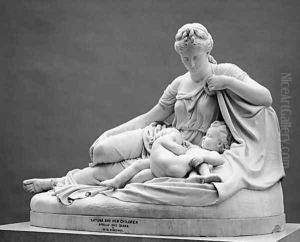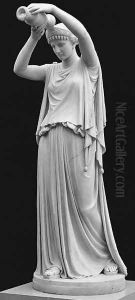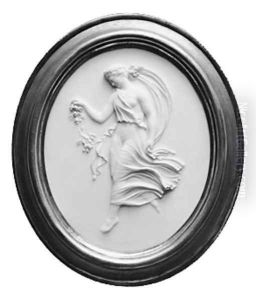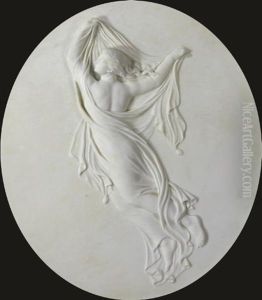William Henry Rinehart Paintings
William Henry Rinehart was a prominent American sculptor known for his neoclassical style. Born on September 13, 1825, in Union Bridge, Maryland, he was the youngest of eight children. His early life was marked by a modest upbringing, and he initially worked on his family's farm. Rinehart's interest in art began to surface when he worked as a stonemason, a trade that allowed him to gain skills in carving stone. Recognizing his talent, local patrons sponsored his education at the Maryland Institute for the Promotion of the Mechanic Arts, where he developed his artistic abilities.
After his studies, Rinehart worked as a professional stone carver before setting his sights on sculpture. In 1855, he traveled to Italy, which was a center for artistic training and production during the 19th century. Settling in Rome, he was greatly influenced by classical art and the Renaissance masters. Rinehart's work often reflected themes from mythology, history, and literature, and he is known for his marble sculptures that exemplify the neoclassical ideal of beauty.
During his career, Rinehart received significant commissions and accolades. His notable works include marble statues such as 'Clytie', 'Antigone Pouring a Libation over the Corpse of Her Brother Polynices', and the allegorical figures of 'Morning' and 'Evening'. He also created portrait busts and funerary monuments that were highly regarded for their grace and expressive detail.
Rinehart's success in Europe was mirrored by his reception in the United States, where his works were sought after by patrons and collectors. Despite his international career, Rinehart maintained connections with his home country, sending works to be exhibited and sold.
Tragically, Rinehart's career was cut short when he died of illness on October 28, 1874, in Rome. His death marked the loss of one of America's finest neoclassical sculptors. Rinehart's legacy lives on through his sculptures, which are held in numerous collections, including the Metropolitan Museum of Art in New York, the Walters Art Museum in Baltimore, and the Smithsonian American Art Museum in Washington, D.C. The Rinehart School of Sculpture at the Maryland Institute College of Art is named in his honor, continuing his impact on the world of art.



